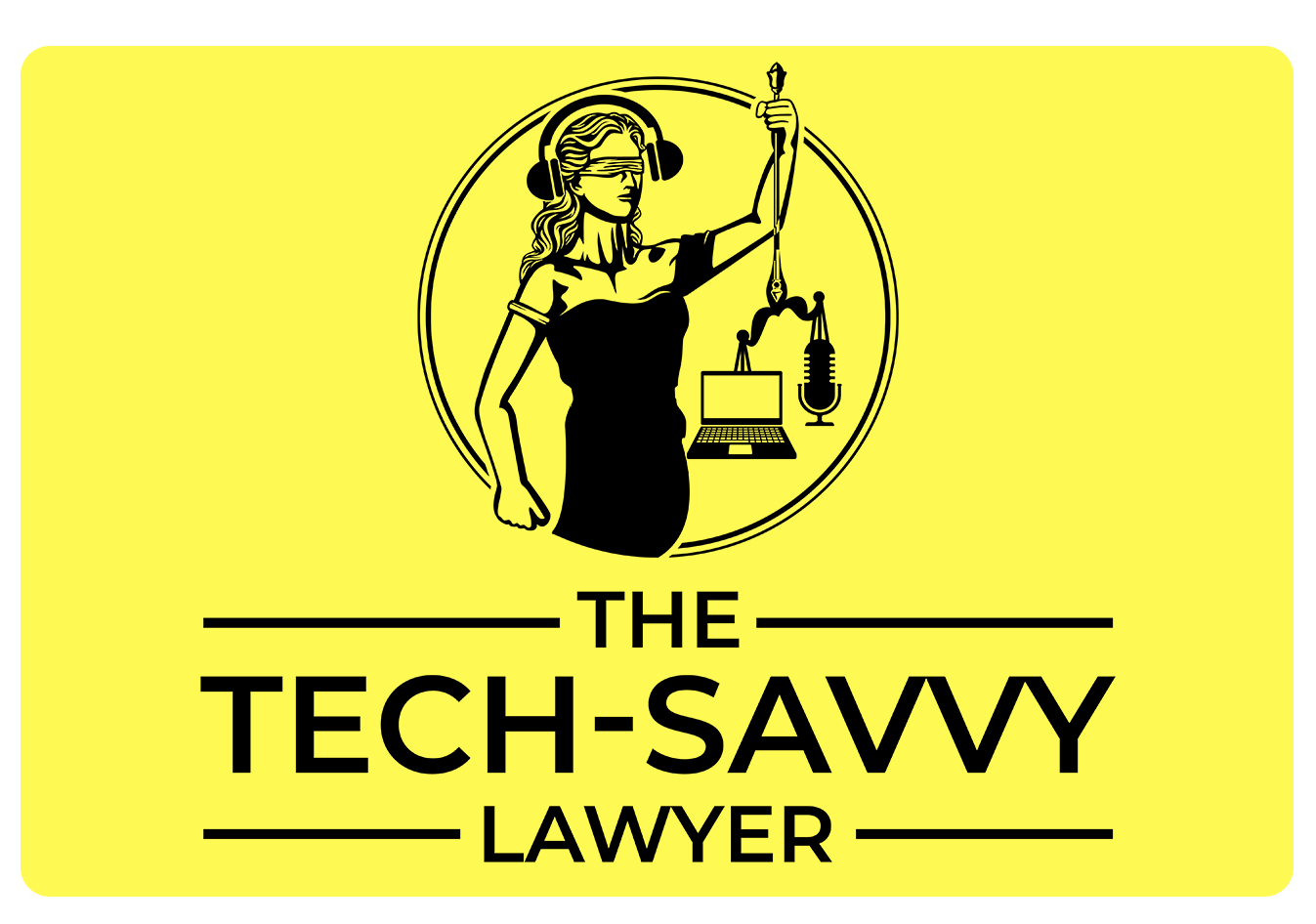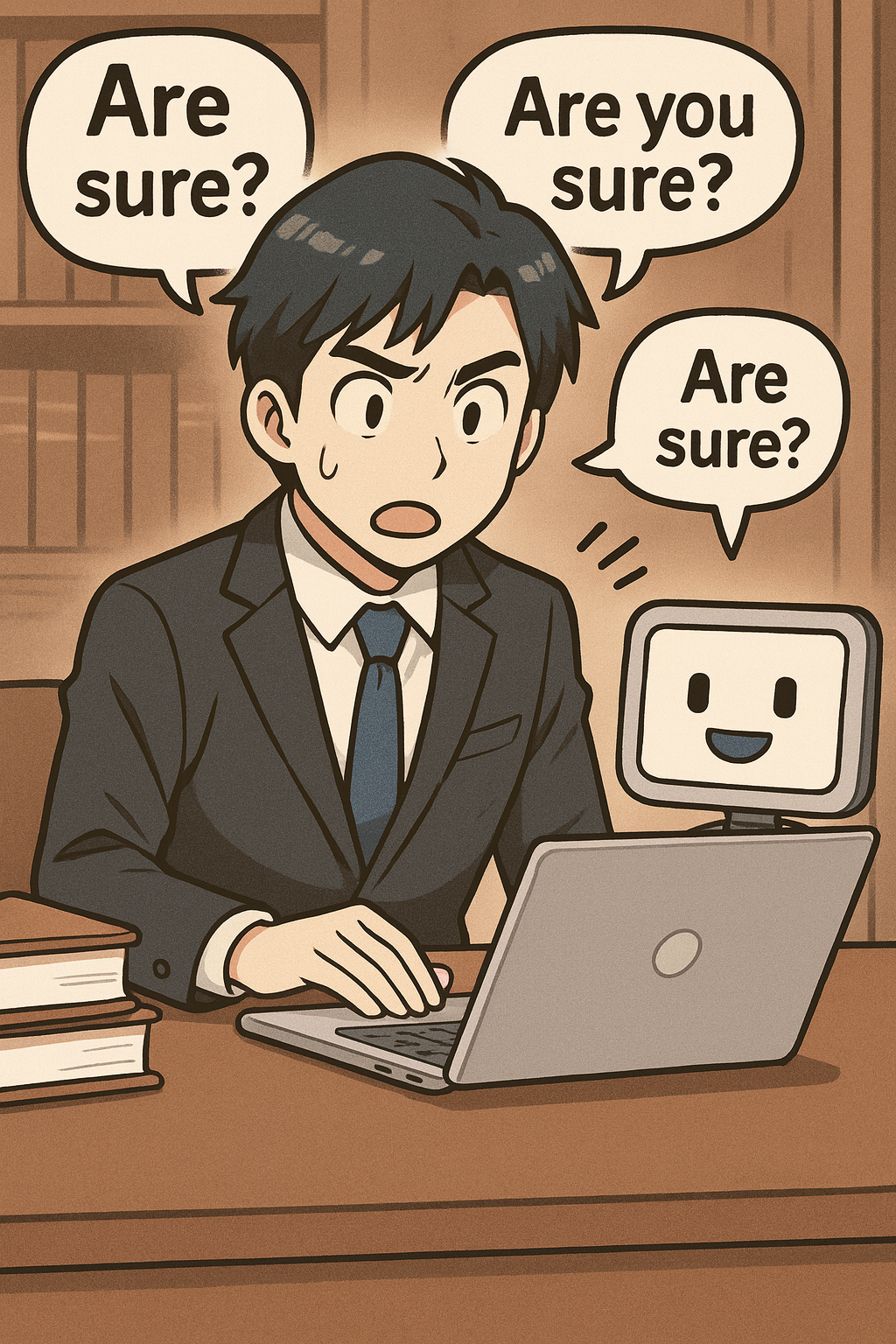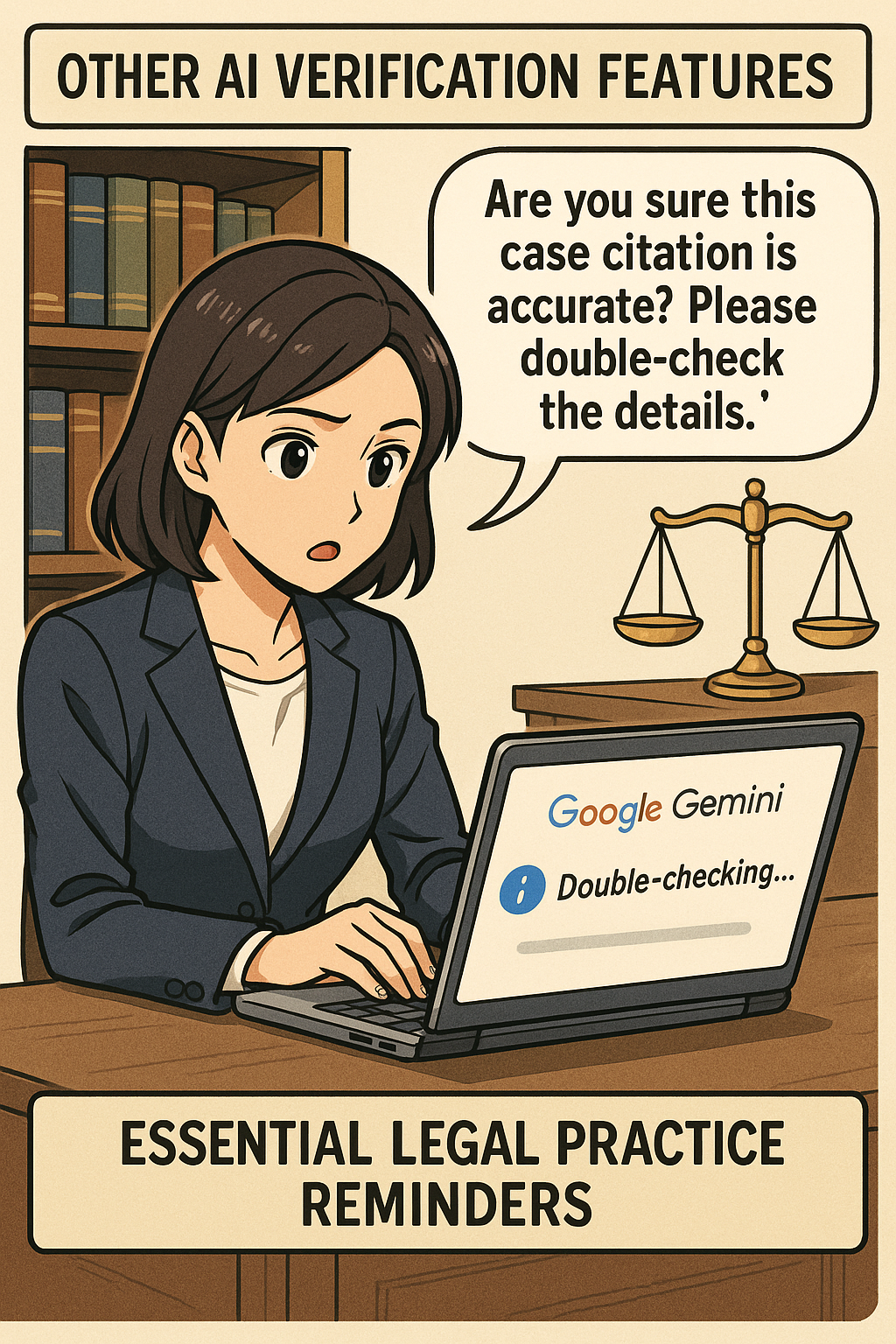How to Ask AI "Are You Sure?" for Better Legal Research Accuracy!
/Lawyers need to be “sure” their AI use is accurate
Legal professionals increasingly rely on AI tools like ChatGPT, Claude, and Google Gemini for research and document preparation. However, these powerful tools can produce inaccurate information or "hallucinations" — fabricated facts, citations, or legal precedents that appear credible but don't exist. A simple yet effective technique is asking AI systems "Are you sure?" or requesting verification of their responses.
The "Are You Sure?" Technique:
When you ask ChatGPT, Claude, or similar AI tools "Are you sure about this information?" they often engage in a second review process. This prompt triggers the AI to:
Re-examine the original question more carefully
Cross-reference information internally
Flag potential uncertainties in their responses
Provide additional context about confidence levels
For example, after receiving an AI response about case law, follow up with: "Are you sure this case citation is accurate? Please double-check the details." This often reveals when the AI is uncertain or has potentially fabricated information.
Other AI Verification Features
Google Gemini offers a built-in "double-check" feature that uses Google Search to verify responses against web sources. However, this feature can make mistakes and may show contradictory information.
Claude AI focuses on thorough reasoning and can be prompted to verify complex legal analysis through step-by-step breakdowns.
ChatGPT can be instructed to provide sources and verify information when specifically requested, though it requires explicit prompting for verification.
Essential Legal Practice Reminders
While AI verification techniques help identify potential inaccuracies, they never replace the fundamental duty of legal professionals to verify all citations, case law, and factual claims. Recent court cases have imposed sanctions on attorneys who submitted AI-generated content without proper verification. If you don’t, you run the risk of running afoul of the ABA Model Rules of Professional Conduct — including Rule 1.1 (Competence), which requires the legal knowledge, skill, and thoroughness reasonably necessary for representation; Rule 1.1, Comment 8, which stresses that competent representation includes keeping abreast of the benefits and risks associated with relevant technology; Rule 1.3 (Diligence), which obligates attorneys to act with commitment and promptness; and Rule 3.3 (Candor Toward the Tribunal), which prohibits attorneys from knowingly making false statements or failing to correct false material before the court.
Best practices for legal AI use include:
Always verify AI-generated citations against primary sources
Never submit AI content without human review
Maintain clear policies about AI use in your practice
Understand that professional responsibility remains with the attorney, not the AI tool
The "Are you sure?" technique serves as a helpful first-line check when you notice something seems off in AI responses, but thorough legal research and verification remain your professional responsibility. Your reputation and bar license could depend on it.










